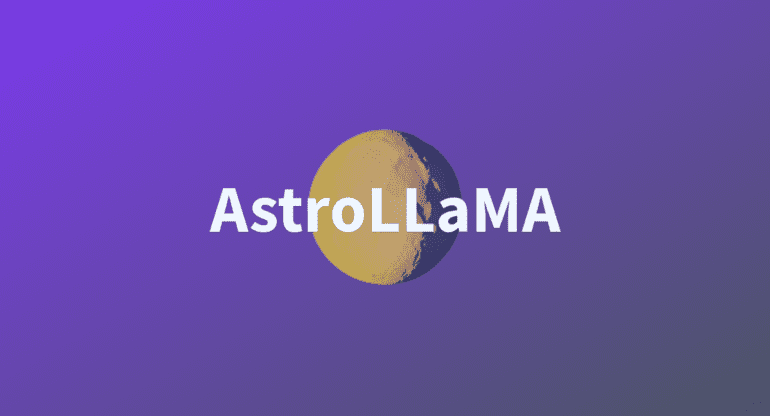TL;DR:
- AstroLLaMA, a 7-billion-parameter model, emerges as a groundbreaking force in AI research for astronomy.
- Large Language Models (LLMs) like GPT-4, PaLM, and LLaMA have transformed diverse fields through their versatile capabilities.
- AstroLLaMA surpasses GPT-4 by providing contextually rich and nuanced insights specific to astronomy.
- Despite its success, AstroLLaMA has limitations in specialized astronomical knowledge.
- Researchers are enhancing AstroLLaMA’s training dataset by incorporating complete LaTeX sources of astronomy articles.
- This expansion is poised to enhance AstroLLaMA’s knowledge base and open new avenues for performance in various tasks.
- AstroLLaMA signifies a milestone in specialized LLMs for astronomy, offering the potential for advancements in scientific content summarization, hypothesis generation, and more.
Main AI News:
In the realm of AI research, the advent of Large Language Models (LLMs) has ignited a wave of enthusiasm across diverse fields. This fervor arises from the confluence of pivotal factors: the vast troves of available data, exponential gains in computational power, and breakthroughs in neural network design. Esteemed models such as GPT-4, PaLM, and LLaMA have consistently showcased their prowess in a multitude of tasks. Their capabilities are harnessed through methods like tailored prompts, precision fine-tuning, and iterative human feedback, culminating in remarkable versatility.
Within the tapestry of disciplines that LLMs touch, astronomy emerges as both a distinctive challenge and a fertile testing ground. Here, we shed light on a groundbreaking development: AstroLLaMA, a 7-billion-parameter model meticulously fine-tuned from LLaMA-2, harnessing the collective wisdom gleaned from over 300,000 astronomy abstracts sourced from ArXiv.
Each of these models, including AstroLLaMA, stands at the crossroads of possibility. Here, they are presented with a shared textual snippet, a challenge to distill wisdom and insights. GPT-4, while proficient, tends to offer generalized responses, lacking the nuanced depth that the domain of astronomy demands. In contrast, AstroLLaMA emerges as the undisputed champion of contextually rich completions. It unfurls relevant concepts and delves into the profound intricacies unique to the realm of celestial study, thereby eclipsing the capabilities of both LLaMA-2 and GPT-4.
AstroLLaMA’s radiance, however, is not devoid of shadows. One limitation looms significant – its occasional falter in domains of specialized astronomical knowledge. Notably, AstroLLaMA’s capacity to pinpoint potential star candidates from Gaia-ESO data occasionally bears inaccuracies. This caveat notwithstanding, dedicated researchers are ardently toiling to augment the model’s aptitude. Their strategy? An ambitious expansion of AstroLLaMA’s training dataset, transcending the realm of abstracts to encompass the complete LaTeX sources of existing astronomy articles. This augmentation promises to infuse the model with a wealth of additional tokens, thereby enhancing its knowledge base.
AstroLLaMA stands as an exemplar of the possibilities within the realm of specialized Large Language Models (LLMs) tailored for the intricacies of astronomy. Its astounding contextual awareness surpasses even the might of GPT-4, despite its comparatively leaner parameter count. This milestone not only unlocks new doors for heightened performance across various domains – from answering complex queries to crafting succinct scientific summaries and generating informed hypotheses – but also ripples outward, potentially impacting the landscape of multi-modal models. The future of astronomy, it appears, is now intertwined with the promise of AstroLLaMA.

Source: Marktechpost Media Inc.
Conclusion:
AstroLLaMA’s emergence as a powerful 7-billion-parameter model in the field of astronomy signifies a significant advancement. Its contextual awareness and nuanced insights set it apart from its predecessors, opening doors to improved performance in various tasks. As AstroLLaMA’s knowledge base expands, it not only promises to benefit the field of astronomy but also holds potential implications for the broader market of multi-modal models, heralding a new era of AI-driven insights and capabilities. Business stakeholders should closely monitor these developments as they may offer valuable opportunities for innovation and market growth.

